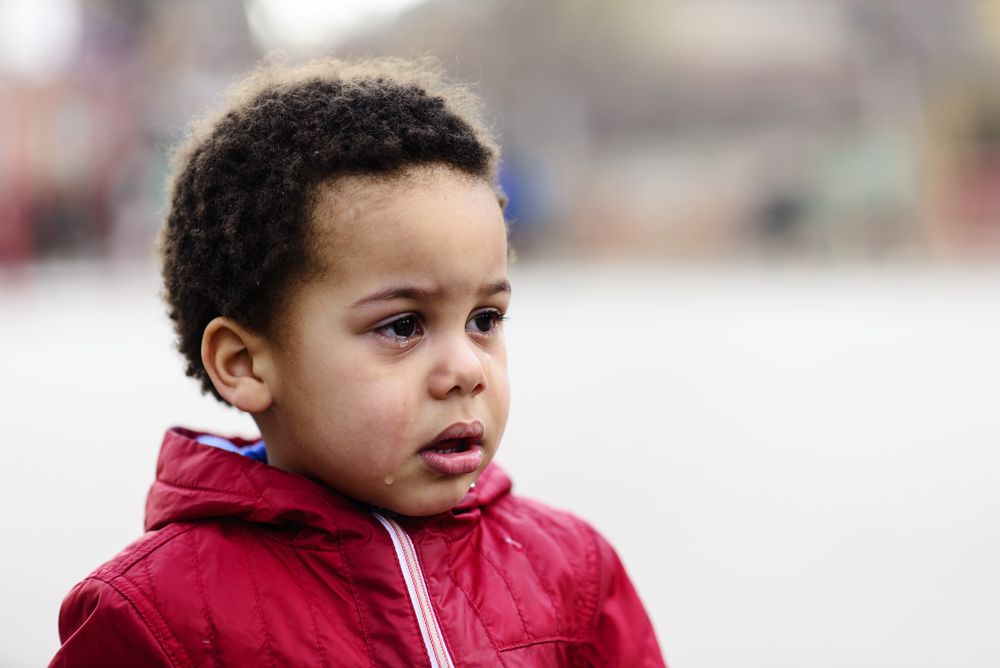
MaLija/Shutterstock
.
For many years Indiana has been an extreme outlier when it comes to taking children from their families. Year after year, Indiana tore apart families at rates far above the national average, and vastly above the rates in states that do a far better job of keeping children safe. By 2016, Indiana was consigning children to foster care at the seventh-highest rate in America, a rate well over double the national average, even when rates of child poverty are factored in.
Of course, state officials blame the opioid epidemic. That’s what they did in Arkansas, until the state’s own consultants showed otherwise. It’s what they’re still doing in Florida, despite a mass of evidence to the contrary.
Now consultants hired by the state of Indiana have found it’s not true there, either.

Richard Wexler
Oh, there’s a serious opioid abuse problem in Indiana all right. But in a scathing report, the Child Welfare Policy and Practice Group (CWG) found that the real problem is, as usual, the state’s typical knee-jerk take-the-child-and-run response to opioid abuse. That’s compounded by a statute that defines “neglect” far too broadly, making it easy to remove children just because families are poor, a profound hostility to families in official policies and a “culture of fear” permeating the state child welfare agency, the Department of Child Services (DCS).
Though her name is never mentioned, the report stands as a rebuke to former Indiana DCS director Mary Beth Bonaventura, who became a media hero in some quarters when she resigned and blamed everything on alleged plans to “slash” the agency’s budget. But the report makes clear that serious problems festered under Bonaventura’s leadership — while spending increased sharply.
The biggest ‘challenge’ — too many children in foster care
On the report’s list of “challenges” — a standard consultant euphemism for “things you’re doing wrong” — number 1 is: “Indiana has a very high rate of children in out-of-home care relative to surrounding states and nationally.”
The report also found that in Indiana, where everyone is a mandated reporter, they call in reports about anything and everything at a rate nearly double the national average. Then, by DCS policy, any report involving a child under age 3 — no matter how absurd — is screened in; meaning it has to be investigated. The reports are checked against an overly broad definition of neglect that could, at some point, include almost every impoverished child in Indiana. And then DCS workers drag cases into court at the highest rate in the nation, forcing families to jump through more hoops and wasting time and money.
The state admits that 14 percent of children taken from their parents in 2017 were taken because of housing issues. Since you’re never supposed to admit you take children because of poverty, one can only imagine the real figure.
As for drug abuse, CWG quoted from one of a great many earlier reports studying the Indiana child welfare system. That report found: “‘Testing positive for illegal drugs commonly leads to removal even when no other evidence is provided to establish child endangerment.’”
And that hasn’t changed: “CWG found that this practice continues … Evaluators believe that the practice is a significant contributor to the high number of children in care.”
And it’s not just opioids. According to the report: “Some [caseworkers] attorneys, and others identified what they viewed as the increased prevalence of the assumption that a parent who uses any type of substance, particularly any that is illegal, is a ‘bad person’ and unsuitable as a parent. Many point particularly to what they see as an aggressive approach in the case of parental marijuana use and wonder if it is warranted … In several instances, legal professionals related efforts by DCS to create a legal argument for court intervention when they did not believe one actually existed.”
But then, DCS practically demands such an approach. In one memorandum, caseworkers are told: “If you cannot find a nexus between a substance abusing parent and the neglect of the child you need to ask more questions and glean more evidence.”
Such admonitions are not unusual. The report found that the DCS policy manual is filled with language practically demanding removal of children from their homes, but is “mostly silent” on federal law requiring “reasonable efforts” to keep families together. (So add Indiana to the list of states where that law is broken with impunity.)
Given that kind of hostility, it’s no wonder the report also found that: “There is reportedly an acute shortage of intensive in-patient substance abuse treatment for any adults and particularly ones that serve parents with their children.”
More evidence of this hostility can be seen in a scathing order issued by the Indiana Court of Appeals, blasting DCS for “repeated, significant violations of due process occurring in termination of parental rights cases throughout the state. … [T]he Court is obligated to formally admonish DCS for its failure to afford litigants throughout the state the due process rights they are owed.”
A ‘culture of fear’
Caseworkers who really want to do the right thing are afraid. According to the report:
“The ‘culture of fear’ theme … was often the response when reviewers asked to what factors they attributed the large increase in the number of children in foster care.”
Those caseworkers also were frustrated by some of the foster parents they encounter who are simply using the system to find a child to adopt and therefore have an incentive to undermine efforts to reunify families. According to the report:
“This issue was of concern to some foster parents as well. One foster parent even recommended that families who want to adopt should not be allowed to foster any child whose plan is reunification. This foster parent had allegedly observed foster parents succeed at ‘sabotaging’ reunification plans and being disrespectful of birth families …”
The real money problem
Equally revealing is what the report found about spending on child welfare in Indiana. The consultants were brought in after former DCS director Mary Beth Bonaventura resigned with a letter that read like a ransom note, saying, in effect, if the agency doesn’t get more money more children will die.
In fact, child abuse deaths already had been escalating on Bonaventura’s watch. The resignation letter was a great way to shift the blame and make her a hero to some journalists and to some of my fellow tax-and-spend liberals who always think the problem is solely lack of money.
In fact, child abuse deaths often increase during foster care panics, sharp spikes in children taken from their homes in the wake of high-profile tragedies. Bonaventura, who ran the agency from 2013 through 2017, presided over just such a panic. And, of course, she presided over the lack of drug treatment, the hostility to families, the obsession with marijuana cases and the “climate of fear” as well.
She certainly should have been aware of these problems. Five previous external evaluations had reached many of the same conclusions. No wonder she was so anxious to shift responsibility.
As for spending, in 2014, the most recent year for which data are available, Indiana was spending on child welfare at a rate well above the national average. And the CWG report found that from then through 2018 such spending has increased by more than 30 percent.
The real issue is how the money is spent. The report found that Indiana spends nearly 10 times more on “intervention” — mostly child abuse investigations and foster care — than on prevention. And who was setting the priorities? Presumably the person running the agency: Mary Beth Bonaventura.
The report also found that DCS spends more than five times as much on drug testing than it spends on drug treatment. Not surprising, considering that Bonaventura’s resignation letter smears parents suffering from the disease of addiction, accusing them of placing “substance abuse above the welfare of their children.” If addiction is really a disease, and that is the overwhelming scientific consensus, this is like saying that parents suffering from cancer are placing their “cancer above the welfare of their children.” Unfortunately this kind of ignorance and arrogance is common in child welfare — though it’s unusual to see it at the very top.
The CWG report illustrates the spending problem in microcosm when discussing the issue of lawyers who represent DCS in court. At the moment, the report says, DCS needs more of them. But if DCS would stop dragging so many families into court needlessly, the report says, they would not need an increase and might even need fewer lawyers.
The same, of course, applies to foster homes, investigators and all the rest of the state’s bloated infrastructure for tearing apart families.
Indiana could accomplish a lot just by spending smarter, instead of simply spending more.
Or, as the report itself noted, in its very first recommendation: “Some children will always require placement out of their homes to ensure their safety, but over-reliance on this approach will create far reaching problems for Indiana as children sustain developmental and emotional harm in the foster care system and reunited families struggle to address issues of disrupted attachment.”
That is a polite way of saying: What Donald Trump has been doing on the border for the past few months, Indiana has been doing to children for years.
The motivation is different. But for the children, the results are the same.
Richard Wexler is executive director of the National Coalition for Child Protection Reform.





























